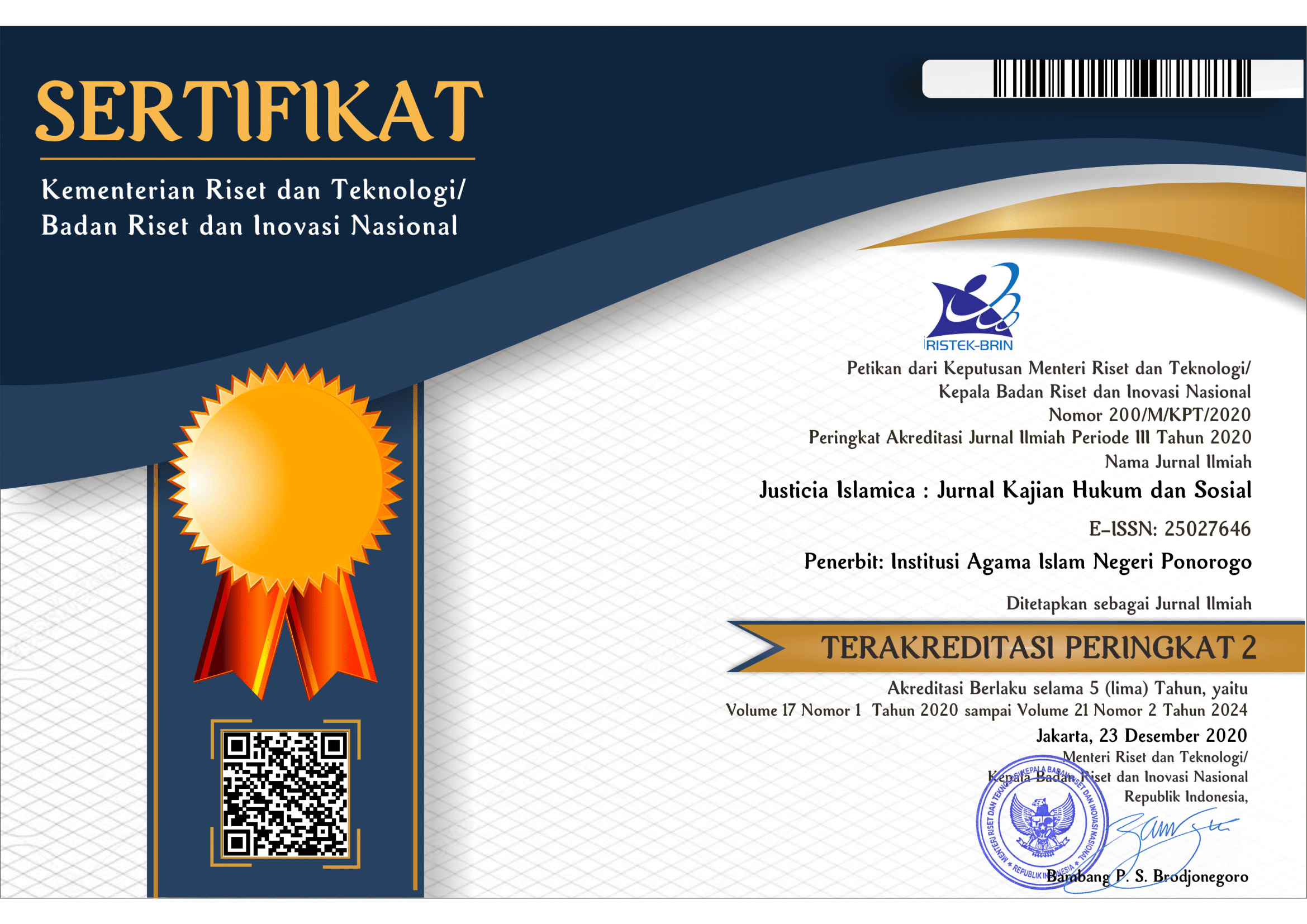Istihsan Dalam Madhhab Shafi'i
Tinjauan Atas Kasus Mustathnayat Madhhab Shafi'i dalam Perspektif Istihsan Madhhab Hanafi
DOI:
https://doi.org/10.21154/justicia.v16i2.1708Keywords:
Istihsan, Istithna’, Mustathnayat, MaqaÅŸid Al-shari’ah, Al-qawa’id Al-FiqhÄ«yahAbstract
Istihsan is a dalil (source and method) of Islamic law validated by the Hanafi school. Al-Shafi’i strongly rejected istihsann (juristic preference) and considered those who practice it as trying to compete with God as the Ultimate Authority and taking a careless decision. However, the istihsan way of thinking in the Shafi’i school is not uncommon but is considered valid. In the discipline of al-qawa’id al-fiqhiyah (Islamic legal maxims), the existence of mustathnayat (exceptions) cases with istithna’ (exception) method is showing istihsan method. This research compares mustathnayat/exception cases in qawa’d al-fiqhiyyah in Shafi’i madhhab and istihsan in Hanafi madhhab. The origin of the legal decision of exception in mustahnayat is judged from istihsan’s point of view. This research accepts that mustathnayat cases in Shafi’i madhhab result from thinking methods like istihsan in Hanafi madhhab in all aspects (its reality, method, and purpose).
Downloads
Published
Issue
Section
License
Copyright (c) 2019 Abdul Munim

This work is licensed under a Creative Commons Attribution-ShareAlike 4.0 International License.
Requirements to be met by the author as follows:
- Author storing copyright and grant the journal right of first publication manuscripts simultaneously with licensed under the CC BY-SA allows others to share the work with a statement of the work's authorship and initial publication in this journal.
Authors can enter into the preparation of additional contractual separately for the non-exclusive distribution of a decadent version of the journal issue (e.g., post it to an institutional repository or publish it in a book), with the recognition of initial publication in this journal.
Authors are allowed and encouraged to post their work online (e.g., in institutional repositories or on their website) before and during the submission process because it can lead to productive exchanges and citations earlier and more severe than published works. (see The Effect of Open Access).
This work is licensed under CC BY-SA.


















